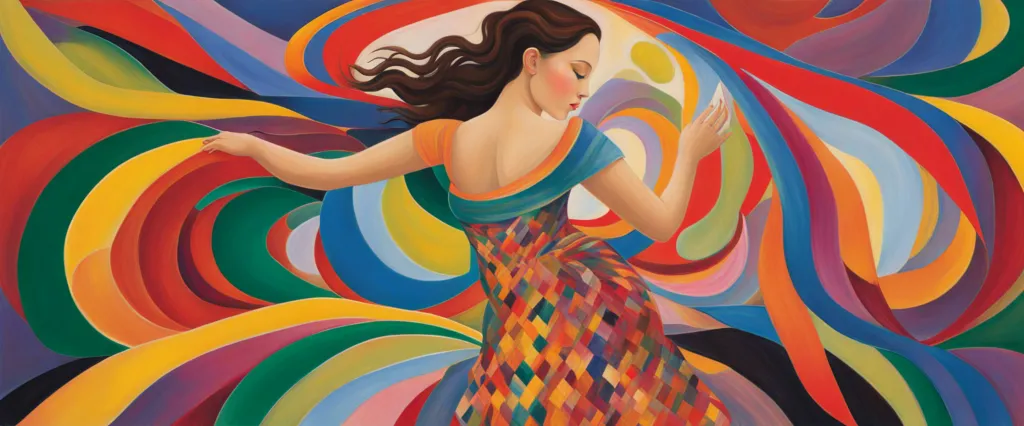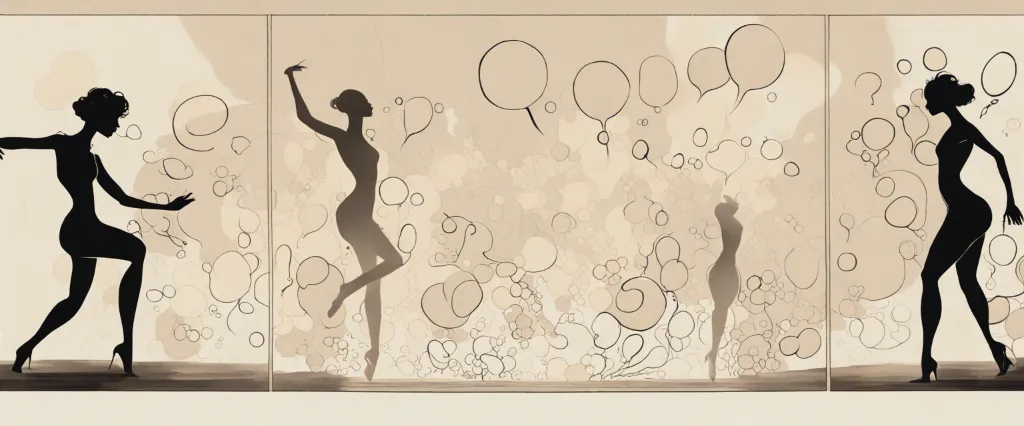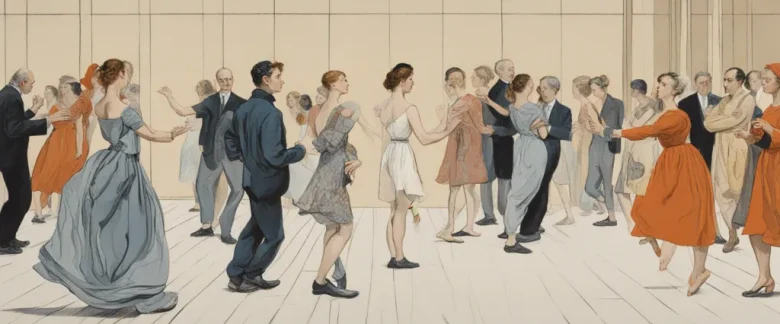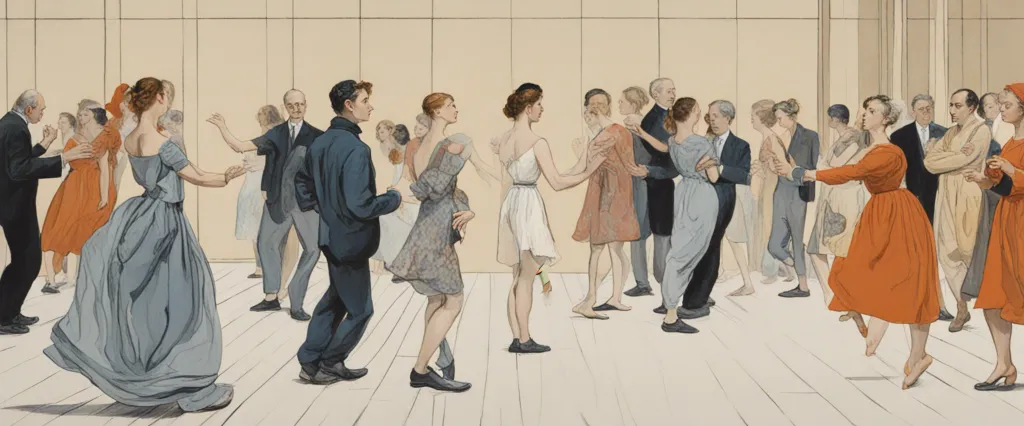In his enthralling book, Natasha’s Dance, renowned historian Orlando Figes invites readers on a captivating journey through the rich cultural history of Russia. Exploring the intersections of art, literature, music, and dance, Figes unravels the various influences that shaped a nation’s identity amidst tumultuous political and social transformations. As a widely respected scholar of Russian history and culture, Figes critically examines the country’s artistic heritage, providing readers with a comprehensive understanding of the cultural forces that continue to shape Russia today.
Chapter 1: Introduction to Russian Culture
Chapter 1 of “Natasha’s Dance” by Orlando Figes provides an introduction to Russian culture, conveying its complex history, diverse influences, and unique characteristics. Figes delves into the notion that Russia has always been a battleground of cultural and political forces, resulting in its distinctiveness as a nation.
Figes begins by discussing the vast span of Russia and the challenges it poses in defining this vast country’s cultural identity. He then explores the historical basis of Russian culture, examining its roots in the medieval state of Kievan Rus, which blended Viking and Byzantine influences. The Mongolian invasion further shaped Russia, adding Mongol elements and isolating it from Western Europe for centuries.
The author also dives into the Byzantine legacy and the significance of Eastern Orthodoxy in Russian culture, highlighting the centrality of religion in Russian society and its influence on the arts and literature. Figes emphasizes the Russian Orthodox Church’s role in preserving the nation’s identity during periods of political turmoil and foreign invasions.
Additionally, Figes explores key themes in Russian literature, including the profound importance of nature and the vastness of the Russian landscape, which he suggests has shaped the Russian psyche and contributed to its distinctive culture. He discusses the works of famous writers such as Pushkin and Tolstoy, showcasing their ability to capture the soul of the Russian people through their literary masterpieces.
Overall, Chapter 1 sets the stage for a comprehensive exploration of Russian culture in “Natasha’s Dance.” Figes portrays Russia as a melting pot of diverse influences, shaped by historical events, religion, literature, and nature. This introduction provides readers with a foundation for understanding the intricate tapestry of Russian culture and its enduring impact on society.
Chapter 2: The Age of Catherine the Great
Chapter 2 of Orlando Figes‘ book “Natasha’s Dance” focuses on “The Age of Catherine the Great.” It delves into the life and reign of Catherine II, the most famous Russian Empress, who ruled from 1762 to 1796. Figes explores the cultural and political transformations that occurred during Catherine’s era, setting the stage for the Russian Enlightenment.
The chapter begins with Catherine’s rise to power and her efforts to consolidate and expand Russia’s territory. She successfully established a modern and efficient bureaucracy, which enabled her to embark on ambitious social and cultural reforms. Catherine zealously pursued the ideals of the Enlightenment, and her court became a hub of intellectual and cultural exchange.
Figes provides a vivid picture of the opulent lifestyles of the nobility and the burgeoning artistic and literary scene during Catherine’s reign. He highlights the rise of the Russian literary tradition through the works of eminent writers like Denis Fonvizin and Aleksandr Radishchev, who portrayed the flaws and contradictions of Russian society. In addition to literature, Catherine patronized the arts, encouraging the establishment of theaters and commissioning grandiose architectural projects.
However, the chapter also addresses the darker aspects of Catherine’s reign, such as her brutal suppression of the Pugachev Rebellion, which sought to overthrow her rule. The revolt exposed the deep-seated social and economic unrest among the peasantry, which continued to be a significant issue throughout Russian history.
Overall, Figes paints a complex portrait of Catherine the Great, portraying her as both a forward-thinking ruler and an autocratic figure. He captures the cultural vibrancy and contradictions of her era, providing readers with insight into the transformative period of Russian history during the Age of Catherine.
Chapter 3: The Golden Age of Russian Literature
Chapter 3: The Golden Age of Russian Literature from “Natasha’s Dance” by Orlando Figes explores the flourishing literary scene that emerged in Russia during the Golden Age of the mid-19th century. This period was marked by an unprecedented surge in creativity and intellectual exchange, resulting in the production of some of the world’s most influential literary works.
Figes begins by contextualizing the factors that contributed to this literary renaissance. Russia’s vast landscape, rich history, and complex social fabric provided a fertile ground for artists to draw inspiration. Additionally, the country’s shifting political and social dynamics, such as the push towards modernization and the emancipation of the serfs, ignited a quest for new ideas and self-discovery.
The chapter then delves into the lives and works of prominent Russian writers like Fyodor Dostoevsky, Leo Tolstoy, and Ivan Turgenev. Figes highlights their divergent literary styles and ideologies while emphasizing their shared commitment to depict the human condition in all its complexity, examining themes of love, faith, morality, and societal change. He also explores the active literary circles and salons that facilitated intellectual discussions and debates, further fueling creativity.
Figes illustrates the impact of these literary giants on Russian society, noting that their works resonated deeply with readers and challenged traditional norms. These writers used their stories as vehicles for social commentary, tackling contentious topics such as inequality, social injustice, and the clash between old and new world views. Their writings not only reflected the era’s anxieties but also provided a profound understanding of the Russian soul and its aspirations.
In conclusion, Chapter 3 celebrates the Golden Age of Russian Literature as a rich and transformative period in Russian history. Figes captures the spirit of intellectual curiosity and artistic innovation that defined this time, providing a glimpse into the profound influence that literature had on Russian society and its identity.
Chapter 4: The Russian Intelligentsia

Chapter 4 of Orlando Figes’ book “Natasha’s Dance” focuses on the Russian intelligentsia during the nineteenth century. Figes explores how this intellectual class emerged, their role in society, and their contribution to the cultural and political landscape of Russia.
The chapter begins by highlighting how the Russian intelligentsia shaped their identity in opposition to the autocratic and conservative regime of Tsar Nicholas I. Scholars and writers, such as Alexander Herzen and Ivan Turgenev, sought to reform society by promoting Western ideas and advocating for social change. They believed in the power of education and enlightenment to modernize Russia and create a more just and progressive society.
Figes depicts the intelligentsia as a privileged elite, mainly concentrated in Moscow and St. Petersburg. He describes their love for literature, philosophy, and culture, emphasizing their fascination with Western Europe. For many intelligentsia members, Western culture represented the path to progress and freedom from the constraints of the Russian autocracy.
Nevertheless, Figes also points out the inherent contradictions within the intelligentsia. Despite their opposition to the autocratic regime, they still maintained a sense of Russian exceptionalism, often romanticizing the Russian identity and embracing Slavophilism. Moreover, the intelligentsia’s commitment to social change was often disconnected from the realities of the working class, leading to a divide between the revolutionaries and the masses.
In summary, Chapter 4 of “Natasha’s Dance” portrays the emergence and characteristics of the Russian intelligentsia during the nineteenth century. While they played a crucial role in challenging the conservative regime and promoting social change, their privileged status and ideological differences prevented them from effectively connecting with the masses and achieving their grand visions of transforming Russian society.
Chapter 5: Russian Music and National Identity
In Chapter 5 of “Natasha’s Dance: A Cultural History of Russia,” titled “Russian Music and National Identity,” Orlando Figes explores the profound connection between music and Russian national identity. Figes starts by explaining how, in the 19th century, Russian music became a symbol of resistance against Western cultural influences.
Figes traces the roots of Russian music back to the medieval chanting of the Orthodox Church, which laid the foundation for a distinct musical tradition. He discusses the importance of the Slavophiles, a group of intellectuals who rejected Western modernity and advocated for the preservation of traditional Russian culture, including its music.
One of the pivotal figures in this chapter is the composer Mikhail Glinka, who is credited with establishing the first truly Russian music. Glinka blended Western classical music with Russian folk melodies, creating a style that resonated with Russians and celebrated their unique national spirit.
Figes explores the different schools of Russian composers that emerged following Glinka, such as “The Five” or the “Mighty Handful,” who sought to create a distinct Russian musical language. These composers, including Balakirev, Cui, Mussorgsky, Rimsky-Korsakov, and Borodin, drew inspiration from folk music and Russian history, infusing their compositions with a distinctly Russian character.
The chapter also delves into the political and social influence of Russian music, particularly during the revolutionary period. Figes discusses Sergei Diaghilev’s Ballets Russes and Igor Stravinsky’s groundbreaking composition, “The Rite of Spring,” which challenged traditional notions of music and shocked audiences, both in Russia and abroad.
Overall, Chapter 5 of “Natasha’s Dance” highlights the deep connection between Russian music and national identity, showcasing how composers sought to capture the essence of Russia through their compositions, influencing not only the music world but also the nation’s cultural and political landscape.
Chapter 6: The Visual Arts in Russia
Chapter 6 of Orlando Figes’ book “Natasha’s Dance” focuses on the visual arts in Russia. Figes explores the development of Russian art from the early 19th century until the end of the tsarist era in 1917.
Figes begins the chapter by discussing how the visual arts in Russia were heavily influenced by European styles, particularly French art, during the reign of Catherine the Great. However, as the century progressed, Russian artists began to develop their own unique style, combining elements of Western art with their own cultural and historical themes.
The chapter delves into the lives and works of prominent Russian artists such as Ilya Repin, Vasily Surikov, and Ivan Shishkin. Repin, known for his realist paintings, captured the essence of Russian life through his depictions of everyday people, historical events, and social issues. Surikov’s historical paintings often focused on pivotal moments in Russian history, while Shishkin specialized in landscape paintings that celebrated the beauty of the Russian countryside.
Figes also discusses the role of art institutions in Russia, such as the Academy of Arts and the Peredvizhniki (the Wanderers). These organizations played a significant role in shaping the direction of Russian art, providing opportunities for artists to exhibit their works and facilitating artistic education.
The chapter also explores how art became politicized in Russia, particularly during the revolutionary period. Figes discusses how artists aligned themselves with different political factions and used their art to promote their ideologies. This led to a wide range of artistic styles, from the avant-garde movements of the early 20th century to the socialist realism that dominated under Soviet rule.
Overall, Chapter 6 of “Natasha’s Dance” provides an insightful overview of the development of Russian art, highlighting the unique contributions of Russian artists and the ways in which art reflected and shaped the cultural and political landscape of the country.
Chapter 7: The Revolution and Soviet Culture
Chapter 7 of “Natasha’s Dance” by Orlando Figes delves into the cultural transformation that occurred in Russia after the Bolshevik Revolution and the establishment of Soviet rule. Figes begins by highlighting the impact of the revolution on the Russian cultural elites, who initially embraced the revolutionary ideals but gradually came to feel marginalized and persecuted under the Soviet regime.
The chapter explores the efforts of the new Soviet state to reshape and control Russian culture. Figes emphasizes the contradictions in the early Soviet approach, as it aimed to eradicate the bourgeoisie and create a proletarian culture while simultaneously drawing inspiration from the pre-revolutionary cultural heritage. This tension is exemplified through initiatives like proletarian literature, experimental theater, and state-sponsored art organizations such as Proletkult and Vkhutemas.
Figes also discusses the artistic debates and tensions that emerged during this period, particularly between Russian futurists and formalists. While futurists favored a radical break with the past, formalists sought to revive traditional forms and create a new, distinctively Russian style. Figes explores the significance of these debates for Soviet cultural policy, as the state ultimately favored the formalist approach.
Moreover, Figes highlights the cultural repression and censorship that characterized the Stalinist era. Artists, writers, and intellectuals struggled to navigate the shifting boundaries of acceptable expression, often facing persecution and exile if deemed disloyal to the regime. The chapter ends by reflecting on the enduring legacy of these tumultuous years, with Soviet culture leaving a profound impact on the subsequent development of Russian art and literature.
Overall, Chapter 7 explores the complex relationship between the Russian Revolution and the cultural transformation that followed, highlighting the aspirations, contradictions, and repression that defined this period in Russian history.

Chapter 8: Post-Soviet Russia and Cultural Identity
In Chapter 8 of “Natasha’s Dance” by Orlando Figes, titled “Post-Soviet Russia and Cultural Identity”, the author delves into the complex transformation of Russian society following the collapse of the Soviet Union. Figes explores how the loss of a shared ideology and the rise of capitalism shifted the socio-cultural landscape, leaving Russians grasping for a new national identity.
The chapter begins with an examination of the euphoric but tumultuous early post-Soviet years when the arts flourished, embracing newfound freedoms. However, Figes suggests that this fleeting period of openness gave way to a sense of disillusionment as economic inequality and political instability took hold. The Russian people were confronted with the question of what it truly meant to be Russian in this new era.
Figes investigates the ongoing tension between Western influences and traditional Russian values. He highlights the struggle between the cosmopolitan aspirations of the elites and the nostalgic longing for a glorious past among the general population. The author discusses the various narratives employed by politicians, intellectuals, and artists to construct a new Russian identity, ranging from references to a mythical pre-Soviet past to a desire to establish Russia as a global power.
Moreover, Figes examines the troubled relationship between the Russian state and its ethnic minorities. He reveals how cultural and ethnic diversity became a contentious issue, with portrayals of minorities as threats to the unity of the Russian nation. The chapter concludes by highlighting the fragile state of Russian identity, caught between the desire for a modern, cosmopolitan future and the urge to preserve its rich historical and cultural heritage.
Overall, Chapter 8 investigates the complex post-Soviet Russian society, addressing the search for a new national identity amidst political and economic challenges, the clash between western influences and traditional values, and the troubled handling of the country’s cultural diversity.
After Reading
In conclusion, Natasha’s Dance by Orlando Figes provides a captivating exploration of Russian art, history, and culture. Figes masterfully weaves together stories and anecdotes from various periods, presenting the reader with a comprehensive understanding of Russia’s tumultuous past. Through his vivid descriptions and detailed analysis of artwork, literature, and music, Figes successfully captures the unique Russian spirit and its complex relationship with Europe. With a focus on the role of dance in Russian society, he reveals the profound influence of art on the nation’s identity and the way it shaped Russia’s mentality throughout centuries. Overall, Natasha’s Dance is an illuminating read that offers a rich and multifaceted portrait of Russian culture, leaving the reader with a deep appreciation for its artistic heritage.
1. The Romanovs: 1613-1918″ by Simon Sebag Montefiore:
Delve into the fascinating history of one of the most influential dynasties in Russian history, the Romanovs. Montefiore’s comprehensive account spans 300 years, exploring their rise, power, and ultimate downfall. This engrossing book offers a unique perspective on the events and individuals that shaped Russia and its extraordinary imperial family.
2. “Russian Thinkers” by Isaiah Berlin:
In this enlightening collection of essays, Berlin analyzes the influential thinkers who shaped Russia’s intellectual and literary movements. From Tolstoy to Turgenev, Dostoevsky to Lenin, Berlin delves into their philosophies, exploring the ideas that helped shape the country’s cultural and political landscape. A captivating read for those interested in understanding Russian thought through the centuries.
3. “A People’s Tragedy: The Russian Revolution: 1891-1924” by Orlando Figes:
Explore the turbulent and transformative period of the Russian Revolution through Figes’ groundbreaking historical account. With meticulous research, this book presents a compelling narrative of the events leading up to the revolution, the chaos of the subsequent civil war, and the rise of the Soviet Union. Figes masterfully brings to life the voices of the ordinary men and women who lived through this dramatic upheaval.
4. “Voices from Chernobyl” by Svetlana Alexievich:
Winner of the Nobel Prize in Literature, Alexievich presents an intimate and haunting oral history of the Chernobyl disaster. Through personal testimonies, she uncovers the gripping stories of survivors, scientists, firefighters, and families impacted by the tragedy. This deeply affecting book brings forth the human side of one of the most catastrophic events in modern history.
5. “Mastering the Art of Soviet Cooking: A Memoir of Food and Longing” by Anya von Bremzen:
Embark on a culinary journey through Soviet history with Anya von Bremzen as your guide. As she recounts her family’s story, it becomes a touching exploration of nostalgia and identity, intertwined with the Soviet Union’s rise and fall. The unique blend of memoir and recipes creates a captivating narrative that offers a unique perspective on the Soviet experience.
These five books provide captivating insights into Russian history, culture, and the experiences of its people. From the grandeur of the Romanovs to the tragedy of Chernobyl, each book offers a unique window into a different facet of Russia’s complex tapestry, allowing readers to gain a deeper understanding of this captivating country.




